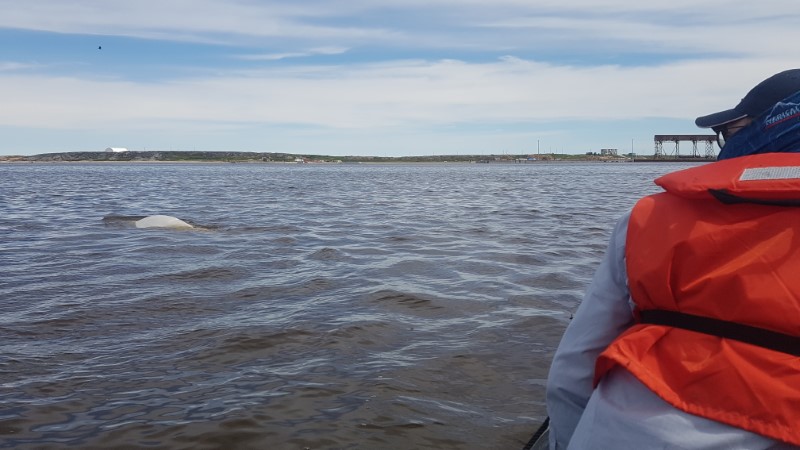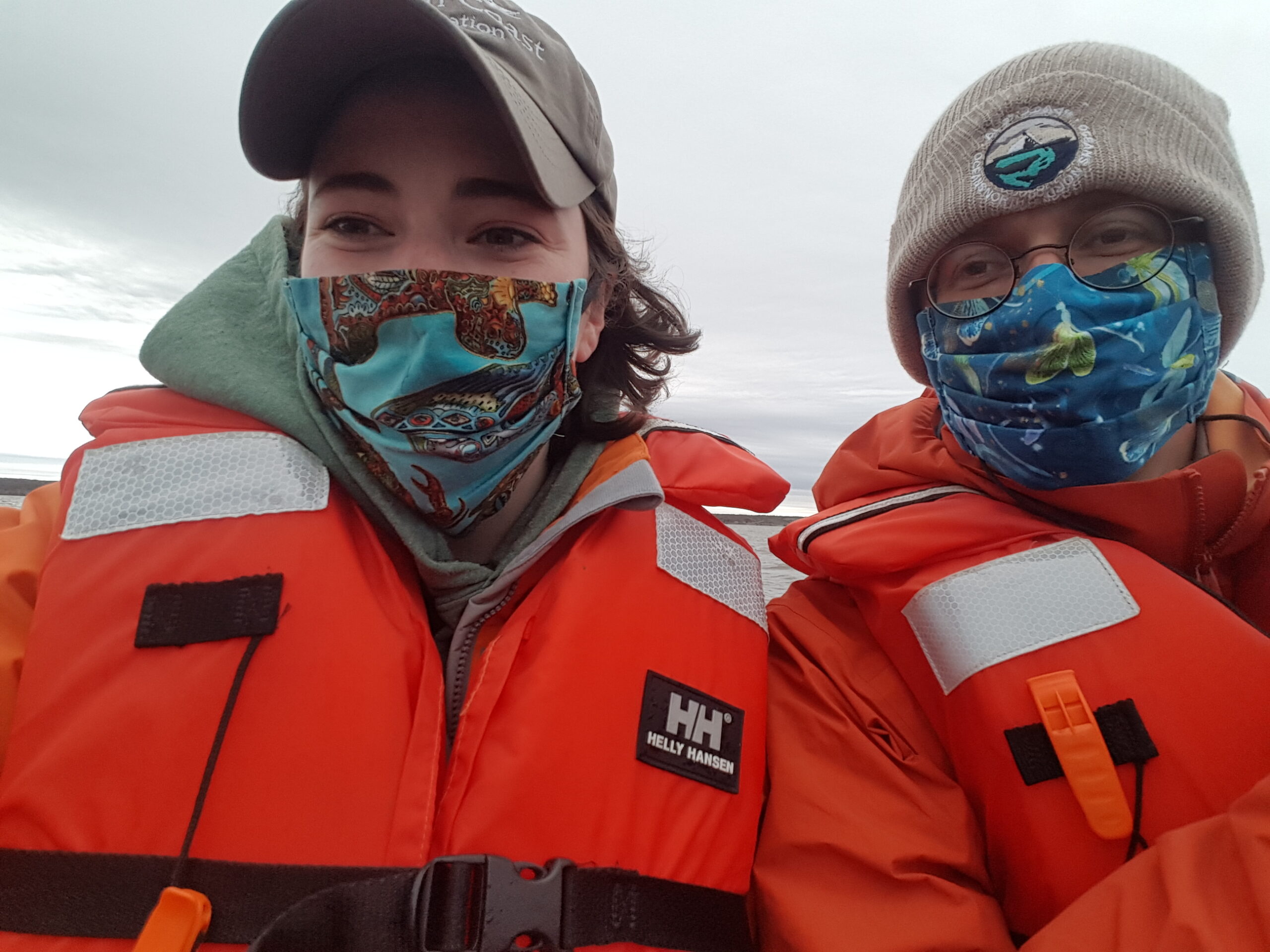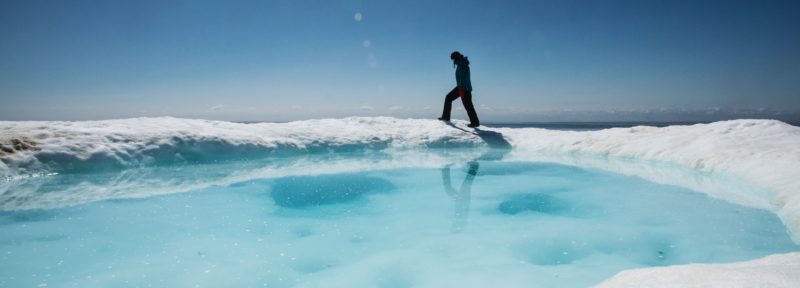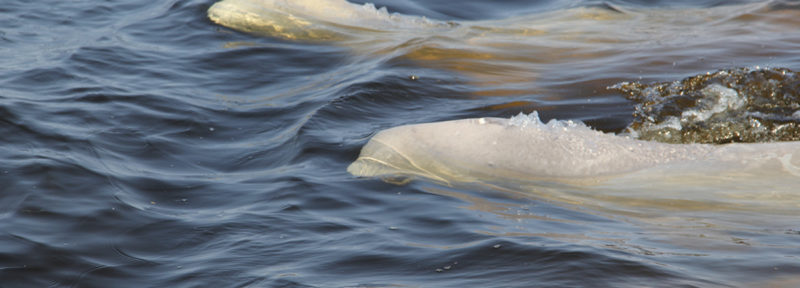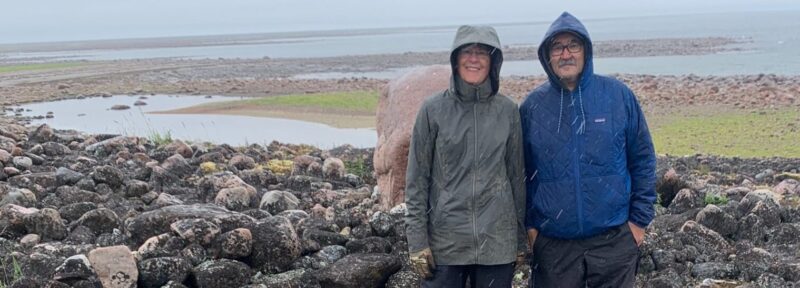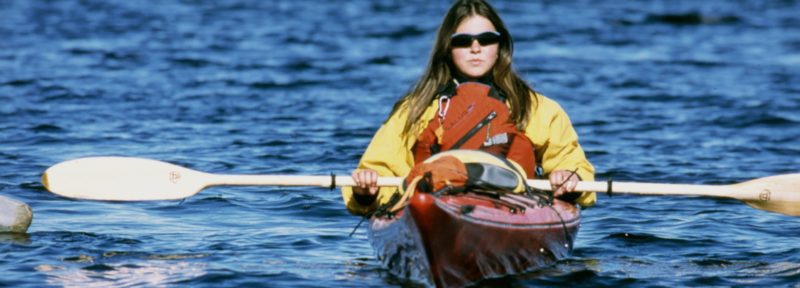Studying Belugas During a Pandemic Summer
A beluga whale breaks the surface while research technician looks on.
Crédit : Erica Gillis
The three-year project is collecting data about how belugas interact with whale-watching vessels, as well as commercial ships arriving at the port.
Erica Gillis, a research manager at the Churchill Northern Studies Centre, is leading the four-member team on behalf of Oceans North.
“It presents a really interesting opportunity to observe belugas with a lot fewer vessels on the water,” said Gillis, who also participated in the first year of the study. “We wouldn’t have been able to do this without COVID – not that COVID is a good thing.”
While the town is working to attract visitors from Manitoba and western provinces, travel restrictions related to the pandemic have resulted in a decline in tourists for whale-watching tours as compared to last year.
The research team is repeating a beluga study from 2005 that found no statistical difference in how whales acted around boats in the Churchill River. But since then, overall tourism has increased and climate change is affecting this region of Western Hudson Bay, where up to 4,000 belugas congregate each summer to shed their skin, eat capelin and birth calves.
Depending on the weather, Gillis and the team go out on the water twice a day with Sea North Tours, accompanying kayak tours at low tide, and traveling in Zodiacs with eight to 12 tourists at high tide.
“You can’t socially distance in Zodiacs, so everyone is wearing masks and gloves,” Gillis said. “At first, I wasn’t sure if people were enjoying it because you couldn’t see them smiling under their masks!”
Researchers Erica Gillis (l) and Ben Verzijlenberg sport masks so they can collect beluga data during the pandemic.
Crédit : Erica Gillis
The other members of her team include two staff from the centre and the fourth person is a local high school student. While on the water, they work in pairs to observe how belugas behave when they are within 100 metres of a boat. For three minutes, one researcher observes the belugas, including using a rangefinder to measure exact distances from the vessel. The other team member records the data in a waterproof notebook.
What are they looking for? They observe whether the belugas are feeding or traveling in a group, whether the pod includes white adults, grey juveniles and calves, the size of the pod and how the belugas are interacting with each other and the vessels.
“One time, a mama and her calf came up to a kayak and it was almost as if she was saying to it, “This is a boat, this is a human!”” Gillis said.
This summer the team has also begun to observe beluga interactions with large ships that dock at the Port of Churchill, including supply ships and grain ships. When a vessel is scheduled to arrive, the researchers record beluga behavior starting 24 hours before it docks and for a day after it leaves, Gillis said.
The study will provide more baseline information about the healthy beluga populations near Churchill. Oceans North has asked the federal government to help conserve the crucial whale habitat in this region, as well as farther north in the Seal River and Nelson River estuaries, by establishing a national marine conservation area.
“It’s surprising how little we know about how belugas use their habitat in this region,” said Paul Labun, policy adviser for Oceans North. “With more information, we can develop adaptive, sustainable practices for shipping and tourism to protect the estuaries and the whales in the era of climate change.”
Ruth Teichroeb is communications director for Oceans North.
Learn more about Churchill’s beluga population in the Summer 2020 issue of the Beluga News.

